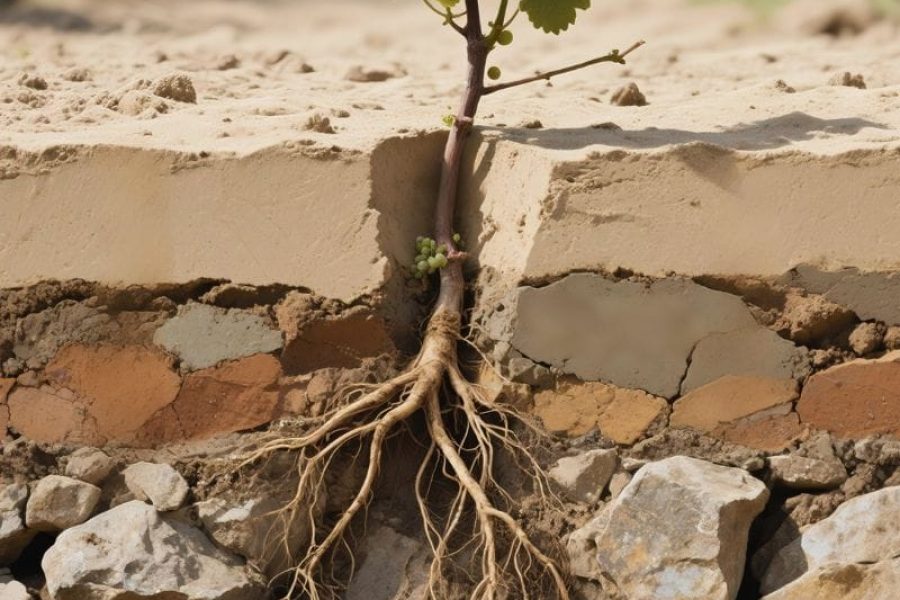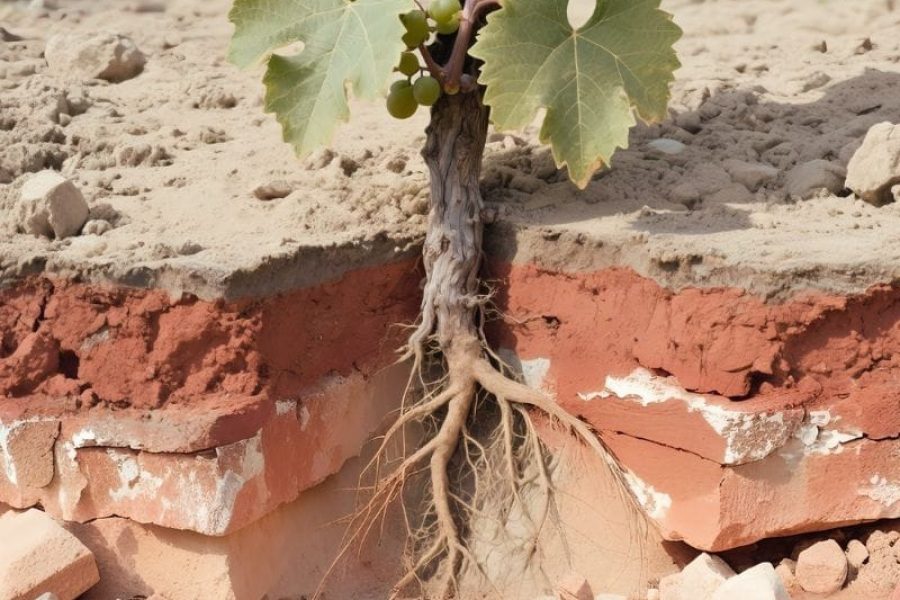O u r V i n e y a r d
single Vineyard
1 5 . 8 5 h a , 7 B l o c k s , 4 V a r i e t i e s
Nestled in Southern Barossa, our Lyndoch vineyard was first planted in 2001 and has since evolved into seven distinctive blocks—each revealing a unique facet of this remarkable region. From varied soil compositions to subtle shifts in microclimate, the diversity across the site is nurtured by a central reservoir and guided by sustainable vineyard practices. Since our debut vintage in 2018, we have remained dedicated to capturing the voice of each block, expressing the land’s character with clarity and care in every bottle.


Block 1
M a t a r o
Block 1 Mataro—where savoury character is brewed from our wines. This 1.66 ha plot has nurtured Mataro vines since 2001. The soil structure features four layers, from sandy topsoils to bands of quartz gravel.
This unique terroir produces wines with seductive boysenberry and violet aromatics, plus mysterious savoury notes.
Through calcium carbonate pH management, we craft medium to full-bodied wines with refined tannins that tell the story of this remarkable site.

Block 2
S h i r a z
Block 2 Shiraz is a captivating 1.04 ha plot that tells a story of transformation. Once home to Merlot vines, it was reborn in 2018 with carefully selected cuttings from Block 6, celebrating its first harvest in 2022.
The sandy, four-layered soil creates ideal conditions for vibrant, relatively lighter Shiraz. pH balancing enhances terroir expression, producing medium-bodied wines with bright red and black fruits, pepper and spice notes, and refined tannins that reflect the sandy terroir.



Block 3
G r e n a c h e
Block 3 is a 3.10 ha vineyard planted in 2001, rooted in deep sandy topsoil over sandy clay—an ideal terroir for cultivating expressive Grenache. With excellent drainage and balanced pH, the vines develop deep roots and produce fruit with remarkable clarity and vibrancy.
As the foundation of the red fruit profile in our wines, this Grenache brings purity and brightness—think wild strawberry, raspberry, and boysenberry—framed by silky tannins and fresh natural acidity. A true reflection of Southern Barossa’s elegance and energy.

Block 4
C a b e r n e t S a u v i g n o n
Planted in 2001, Block 4 spans 1.20 ha and stands out for its coarse sandy topsoil—more rugged than other blocks—reaching 90 cm before meeting clay. These well-draining soils allow roots to reach depths of 140 cm, producing structured, complex Cabernet Sauvignon.
Aromas of tobacco and herbs develop into rich blackcurrant at full ripeness, with savoury notes of graphite and seaweed. With fine, sinewy tannins and vibrant acidity, this wine is built to age gracefully over time.



Block 5
S h i r a z
Block 5, our largest Shiraz plot at 4.40 ha, was planted in 2001. Its distinctive soil structure features a top layer of sandy loam and loamy sand extending to 35 cm, before transitioning into medium heavy clay enriched with soil carbonate and quartz gravel. This well-drained profile, with managed pH levels, produces a Shiraz of lifted aromatics and refined texture.
The wine showcases bright red fruit expression—raspberry, blueberry, and subtle spice—with excellent colour and elegant balance. On the palate, it offers vibrant fruits supported by fleshy, velvety tannins, delivering a lighter, more polished style with immediate appeal.

Block 6
S h i r a z
Planted in 2003, Block 6 covers 2.60 ha and is home to the rare and prized Terra Rossa soil—present in less than 1% of the world’s wine regions. This vivid red clay loam, formed from limestone and iron oxide over millions of years, offers ideal growing conditions. A shallow topsoil leads into friable red clay and a carbonate layer, creating natural vine stress and concentrated fruit.
With excellent drainage, balanced water retention, and a naturally neutral pH, these soils drive roots deep—reaching 85 cm. The result is small, flavour-packed berries that yield Shiraz of remarkable intensity, structure, and ageing potential.



Block 7
S h i r a z
Planted in 2005 and spanning 1.85 ha, Block 7 features a shallow sandy clay loam topsoil (15 cm) over friable red clay to 75 cm, with calcareous subsoil extending to 115 cm. Sharing geological similarities with Block 6, this block offers its own refined expression of Shiraz.
Wines from Block 7 show intense dark colour, black fruit and pepper aromatics, and a finely structured palate with elegant tannins, black spice, and subtle licorice. While slightly less powerful than Block 6, its consistent fruit quality and balanced profile make it ideal for premium Shiraz.
